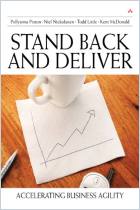Únase a getAbstract para acceder al resumen.

Únase a getAbstract para acceder al resumen.
Colleen Crum and George E. Palmatier
Demand Management Best Practices
Process, Principles and Collaboration
J. Ross, 2003
¿De qué se trata?
Demand defines what’s possible for businesses; influencing it gives you control of your future.
Recommendation
Supply chain consultants Colleen Crum and George E. Palmatier use crystal-clear language and unerring dedication to the finer points of “demand management” to define it, encourage it, and enable you to implement it effectively. After digesting their case studies, scenarios, analyses and pithy wisdom, you will understand that demand management is neither a niche nor a fad; it’s more of a Swiss Army Knife for rethinking and revitalizing your business. Open one blade and you sharpen sales; open another and you carve better branding or marketing. This book is eminently useful, employing jargon only where necessary and neatly encompassing its main points in “best practices” lists at the end of each chapter. A careful read with a highlighter in hand would help anyone better understand supply chains. More specifically, getAbstract recommends it to higher-ups in sales and marketing, to those who manage supply chains, and, of course, to those responsible for providing forecasts or managing demand for companies.
Summary
About the Authors
Colleen Crum is a managing principal at Oliver Wright Companies, where George E. Palmatier is a consultant and educator.






















Comment on this summary